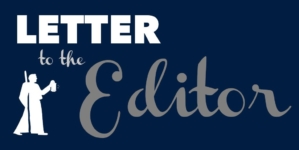The election campaign is essentially about 6,000 votes
Dear Editor,
Unlike the months leading up to the 2015 general elections, the current state of affairs reveals very little surprises on the voting trajectory. The biggest concern in 2015 was whether the then opposition would be able to unseat the PPP and that determination rested on how many votes the AFC would pull from the PPP. The PNC had remained and still is, relatively flat in terms of attracting or losing its supporters. Its support base has remained constant since independence losing some supporters through migration, and death while gaining some minimal crossing over from other ethnic groups. The calculation then was that if the AFC could muster about 5,000 to 6,000 votes, or most of that, from the PPP the APNU coalition might be victorious with a slim majority at 2015 polls. The plan worked, although the PPP claimed that the election was not fair. In early 2020, a similar plan or the potential for a similar plan is on but in reverse. The PPP is campaigning to retain those deserted votes while APNU is hoping to maintain what they had gained in 2015. The campaign, at its core, is for 6,000 votes or one seat.
It would be remiss not to factor in the small parties just because since they will not muster more 3,000 votes, no seats, although numbers do not necessarily constitute a seat in certain regions in Guyana. The small parties are simply campaigning for the 2025 or even the 2030 general elections. They had a late start. Without digressing, this writer believes, there has never been such thing as a third political force in Guyana, the battle cry of small parties. They are not yet independent. The passing of the no-confidence motion and the unfolding events thereafter have revealed that some well-known cats in small parties, AFC included, are closet PNC loyalists or closet PPP Marxists or the combination of the dictatorial characteristics of the two major political parties in the name of Third Force. Breaking away from the two major political parties and forming parties does not make one a member of the Third Force, whatever this means.
The questions that come readily to mind are: who are these potential 6,000 voters and which way would they swing regarding their voting preference? From the record of general elections 2015, most of these individuals are Indians, not working-class Indians, but those from propertied and educated class. Taken together, they were, leading up to the 2015 general elections, convinced that they had reached what Economists call the stage of diminishing returns with the PPP. They were looking for a greener pasture to extend their version of the PPP (Power, Privilege, and Prestige). This was a mass miscalculation that caused them more than four and a half years of misery brought about by poor leadership from the current caretaker regime. Worse still is that continuous poor leadership has disturbed, dismantled and even destroyed the base of working Indians upon which their existence has depended. Now, are they going vote for the PPP? At this juncture, a subjective analysis or even a conjecture is plausible, and that is, they might vote for PPP because the odds are stacked against the APNU because of its dictatorial tendencies, ethnic favouritism and bio-nationalism, disfavouring them.
Yours faithfully,
Lomarsh Roopnarine






















